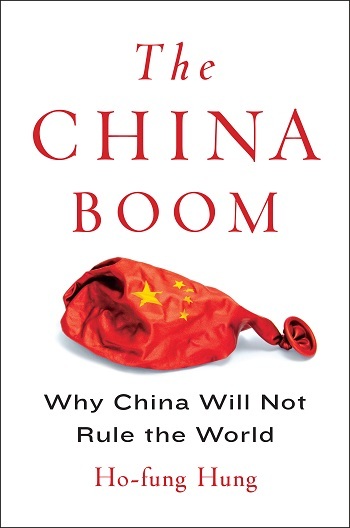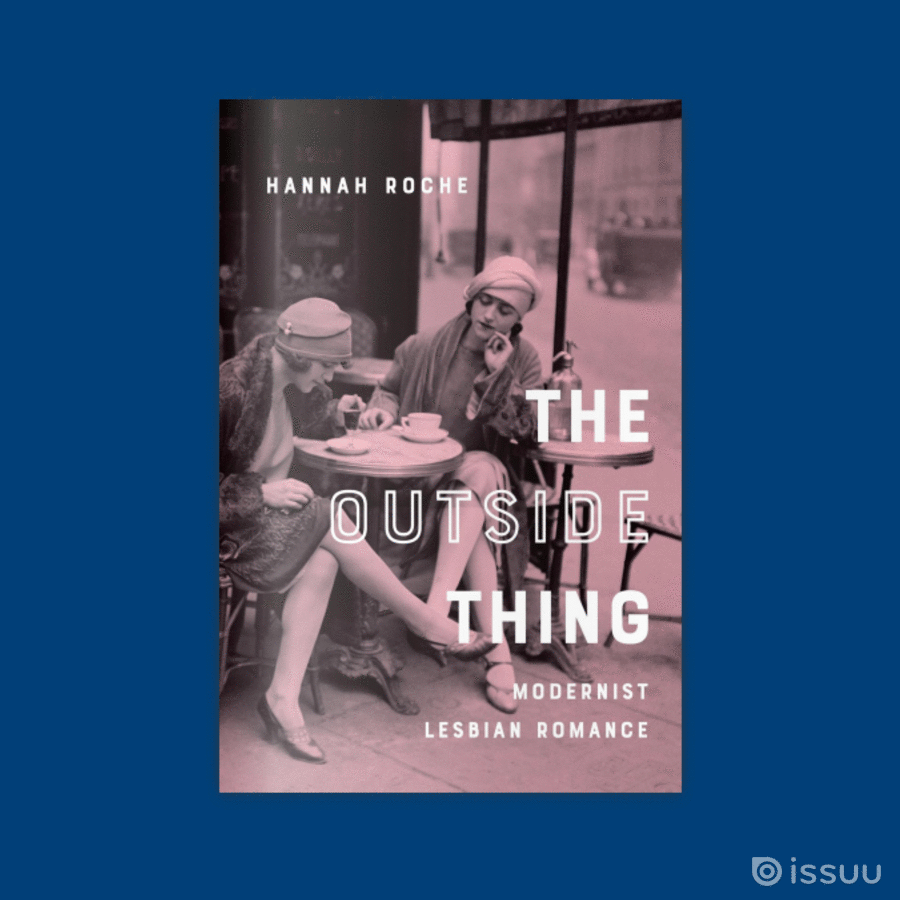Political Uncertainties in Post-miracle China
“With the economic boom times gone, the perpetuation of such socio-political peace, as well as what the Communist Party would do to contain any imminent unrest becomes uncertain. Political and legal reforms might help institutionalize conflict resolution, smoothen power transition, and hence promote stability. But the Party leaders are more likely to worry that any opening will fuel rising expectations, ultimately threatening one-party rule.” — Ho-fung Hung
This week, our featured book is The China Boom: Why China Will Not Rule the World, by Ho-fung Hung. Today, we are happy to present a crosspost of “Political Uncertainties in Post-miracle China,” an article by Ho-fung Hung originally published on the University of Nottingham’s China Policy Institute Blog, in which he explains the political implications for China’s recent economic growth slowdown.
Don’t forget to enter our book giveaway for a chance to win a free copy of The China Boom!
Political Uncertainties in Post-miracle China
By Ho-fung Hung
The latest economic data from China shows that its GDP grew 7.4 percent in 2014. It was the slowest growth since 1990 (amidst global sanctions post- Tiananmen) and missed its growth target for the first time since 1998 (in the aftermath of the Asian Financial Crisis). It is another indication that the era of double-digit hyper growth has ended. To be sure, a 7.4 percent growth rate is still enviable for many developing countries. Domestic consumption now constitutes 51.2 percent of GDP, suggesting that the Chinese economy is more balanced and less dependent on fixed-asset investment and exports.
Slower, more balanced growth is good for China in the long run. But such slowdowns will also bring immediate headaches for Chinese leaders. After the outbreak of the global financial crisis in 2008, the Chinese government unleashed a huge stimulus to aggressively flood local governments and enterprises with state bank loans, trying to shield the economy from the global headwinds with a wave of debt-driven construction. China’s total debt to GDP ratio jumped from 147 percent at the end of 2008 to over 250 percent in mid-2014 according to a Standard Charter report. It has reached 282 percent by February 2015 according to a McKinsey report. This figure is dangerously high compared to other emerging economies, and it is set to keep soaring when the economy continues to slow.
The economic slowdown will make many heavily indebted companies face declining profits and local governments see tumbling revenues–a recent report by Deutsche Bank warns that China is set to face the toughest fiscal trouble since 1981– decimating their capacity to service and repay the debts that they incurred to build repetitive infrastructure, excessive steel mills, ghost town apartments and the like during boom times. A vicious cycle of defaults and further growth deceleration can turn a slowdown into something uglier. Even if the central government decides to keep big insolvent units afloat with its fiscal resources, the economy will be plagued by zombie enterprises like Japan in the 1990s. Hard landing or soft landing, the Chinese economy is not flying any more. As such, China’s socio-political tranquility and its geopolitical ambitions over the last two decade, both built upon a high-flying economy, will face serious challenges.
The spectacular growth of inequality accompanying China’s market transition is well known. Social polarization has not boiled over into large-scale unrest since 1989 largely because the economic boom has brought nearly universal improvements in living standard. My recent research shows that even rural Guizhou, the poorest of the poor regions of the country, enjoyed nine-fold growth in per capita income measured in purchasing power parity between 1980 and 2010 (though lagging behind the national growth rate of 13 times). For those whose lives have been uprooted by land grabs and state enterprise layoffs, many still hope they or their children will find a living by migrating and working in faraway boom towns. The rising revenues of local governments also enabled them to build sophisticated monitoring and security apparatuses and to buy off would-be and actual protesters, preemptively forestalling the evolution of local unrest into nation-wide turmoil. A rapidly expanding economic pie encouraged elite factions to repress their rivalries so that each of them could secure their slice.
With the economic boom times gone, the perpetuation of such socio-political peace, as well as what the Communist Party would do to contain any imminent unrest becomes uncertain. Political and legal reforms might help institutionalize conflict resolution, smoothen power transition, and hence promote stability. But the Party leaders are more likely to worry that any opening will fuel rising expectations, ultimately threatening one-party rule. Xi’s tightening restrictions on schools and media, his repeated reminder about the Soviet collapse, and his frenetic purges of party cadres in the name of anti-corruption indicate that he is continuing the hardline path of his predecessor Hu Jintao, who praised North Korea for its effective ideological and political control. It won’t be surprising if the post-miracle “new normal” of Chinese politics turns out be North Korea lite.
Another uncertainty that the fading miracle will bring is how China will position itself in the world. For a long time since Deng Xiaoping, the dominant doctrine of China’s foreign policy has been to lay low. By cooperating with the United States and guaranteeing China will not challenge the existing regional and world order, China has benefited from the opening of Western markets and influx of foreign capital in return.
This started to change in the early 2000s. The U.S. preoccupation with Afghanistan and Iraq, coupled with the acceleration of Chinese economic growth after its accession to the WTO and its successful bid for the 2008 Olympics in 2001, offered China much leeway to flex its muscle in East Asia. By opening its own market for investors from wealthier neighbours like Taiwan and South Korea and pumping aid, loans, and investment into poorer ones like Cambodia and Myanmar, China is winning increasing leverage over the ruling elites across East Asia. China’s simultaneous inroads into Africa has attracted global attention too.
After the outbreak of the global financial crisis in 2008, the Chinese economy rebounded strongly in 2009-10 after a brief slowdown under the government’s aggressive stimulus program. China suddenly became the single engine of the world economy when the U.S. was struggling to recover and Europe’s troubles worsened. Exporters of machines, commodities, sport cars, and designer handbags around the world all looked to China as their saviours. Chinese officials became confident enough to lecture U.S. officials on economic management. With the “lay low” doctrine pushed aside, China became ever more assertive in its territorial disputes with Japan and Southeast Asia. It also became more proactive in promoting absorption of Taiwan, a de-facto independent polity, and subjugating Hong Kong, a former British colony the autonomy of which was warranted by the Sino-British Joint Declaration of 1984 and U.S.’ Hong Kong Policy Act of 1992.
There are many things that money can’t buy. China’s economic might fails to make its assertiveness easier to swallow for its neighbours. Backlashes erupted all over the region in 2014, including the Sunflower protests in Taiwan, anti-China riots in Vietnam, and Hong Kong’s Occupy movement. These dramas were on top of the rise of China-suspecting hawks in Japan and the pursuit of warmer relation with the U.S. by Myanmar, Vietnam and the Philippines as an insurance policy counterbalancing China’s influence.
Whether and how the Chinese leaders will readjust their foreign policy posture amidst moderating economic prowess remains to be seen. Xi could scale down China’s geopolitical ambitions to defuse tension so that the leadership could devote more energy to managing the economic slowdown and any domestic socio-political repercussions. But he might also choose to prefer regional tension escalation. We should remember that fanning externally directed nationalist rage to smother domestic discontents is an age-old trick for rulers who face survival crises amidst domestic troubles.
The spectacular economic boom times in China have certainly ended. The socio-political and geopolitical implications are far more uncertain. China can become either a more liberal and amiable giant or a more authoritarian and nationalistic one during its economic landing. How this will play out in the end hinges on the choices that the Chinese leaders are going to make, as well as the approach that the international community shall adopt in dealing with an increasingly capricious China.
Read the original article at the University of Nottingham’s China Policy Institute Blog.




